10F, Building B, Erqi Center, Erqi District,
Zhengzhou City,
Henan Province, China
Wit:+86 15138685087
(WhatsApp/Wechat)

10F, Building B, Erqi Center, Erqi District,
Zhengzhou City,
Henan Province, China
Wit:+86 15138685087
(WhatsApp/Wechat)
A container house is a kind of prefabricated house, which looks like a shipping container. It uses C steel and H steel as the skeleton. Also, it uses colored steel sheets and sandwich panels as wall panels and roofing sheets. Moreover, the prefab house is manufactured off-site in advance. Therefore, it is easy to ship and assemble. Some people use them as a sustainable alternative to traditional homes. Others are attracted to the unique look and feel of containers!
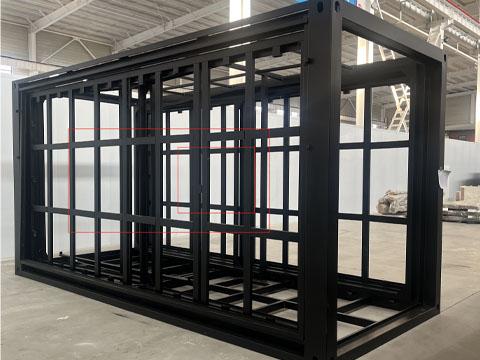
Fully galvanized frame
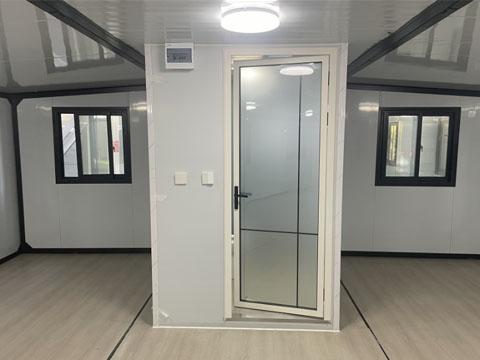
Interior layout
Container homes offer a cost-effective alternative to traditional housing options. They are often more affordable due to their reduced need for building materials and labor. One of the key advantages of container homes is their quick construction time. The following are the main advantages.
1. Easy and quick to assemble and disassemble. Most work of prefab modular houses is completed in the factory. And it will not damage the environment.
2. Low cost. Compared to other buildings, it is much cheaper.
3. Recyclable. For example, the container houses in Qatar will be donated to the homeless after World Cup.
4. Easy to transport and move. It is especially suitable for users who frequently change addresses.
5. Durable to use. The prefab house is made of steel, with strong shock resistance and deformation resistance. Its service life is more than 20 years.
6. Heat preservation, fire and heat insulation.
7. Customizable design. The container house is customized according to the client’s needs and its use purposes, such as meeting room, dormitory, kitchen, toilet, and so on.
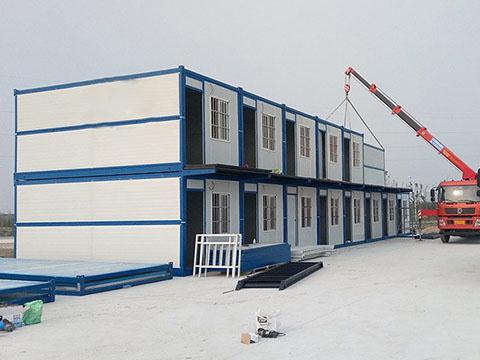
Easy to assemble and hoist.
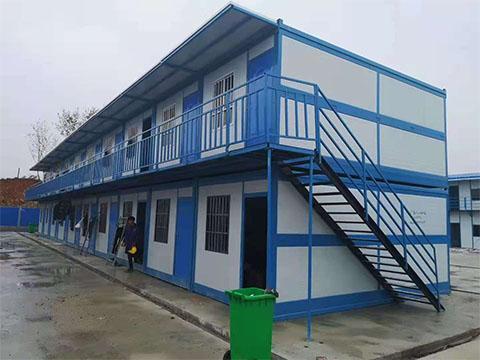
Temporary housing for workers
1. As the office or dormitory for workers in construction sites.
2. Temporary houses for residents of disaster areas or epidemic areas.
3. It is a great choice for outdoor camp projects, motor hotels, and other leisure houses in tourist areas.
4. Houses for large-scale field exploration and operations in transportation, water conservancy, oil, and natural gas.
5. Temporary housing for urban offices, civil resettlement, and exhibitions, as well as military fields.
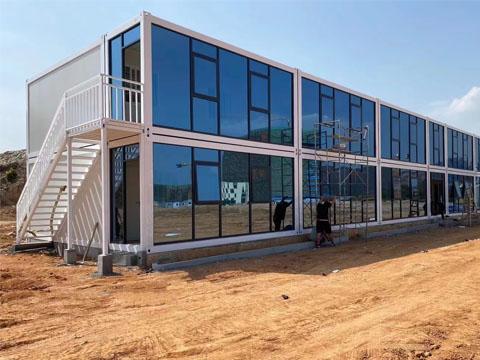
Commercial buildings
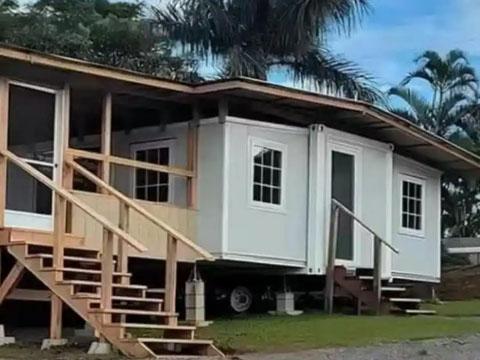
Mobile Store
Prices vary quite a bit, depending on the size of the home, how many homes are purchased, the materials the home is made of, the finishes…
1. In general, these homes tend to cost between $25,000 and $80,000
2. New, standard, and high-cube 40-foot containers cost between $3,800 and $5,000 each.
3. Smaller, more basic container homes cost between $10,000 and $35,000.
4. Larger homes built using multiple containers and facilities cost between $100,000 and $175,000.
Container homes can cost half the per square foot of traditional wood-frame buildings.
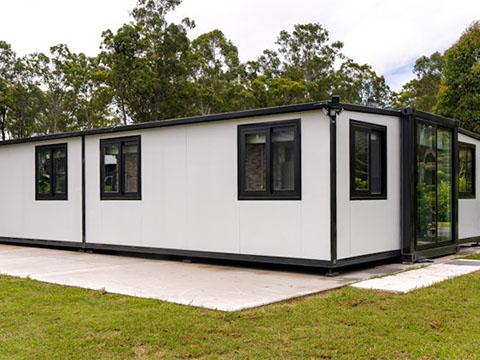
40-foot container house landing effect
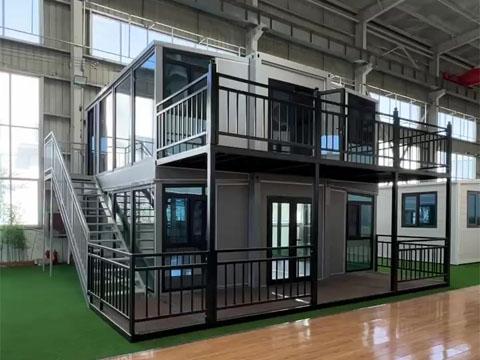
Stacking effect of top and bottom layers
While land costs and climate requirements are significant considerations, it can also depend on many factors, including:
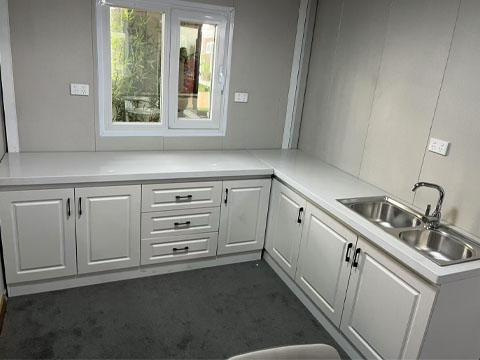
L shaped cabinet
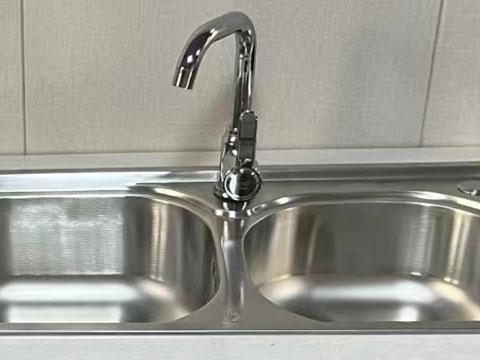
Stainless steel sink
Q1: Are container homes cheaper?
A: Container homes are generally cheaper than traditional homes. Compared to homes of similar size, container homes are generally around two-thirds the price of traditional homes. If you want to cut costs and save even more money, you can repurpose an old container instead of buying a new one, assuming it’s still in good weather-resistant condition.
Q2: Are container houses safe?
A: It is as safe and reliable as a traditional house, and also as a wooden house, provided you use and maintain it properly. Container transportation is mainly to protect internal goods from damage during long-distance transportation, which makes it safe and reliable in any weather conditions.
Q3: How long can a container house be used?
A: When you take good care of them, they can last 25-30 years. Of course, if they are worn, scratched, or rusted during use, you can use anti-rust paint to protect the surface. Even if the integrity of the side steel plate is threatened, it can be replaced without changing the house frame.
Q4: What are the standard dimensions of a container home?
A: Containers are usually available in 10-, 20-, and 40-foot sizes. These containers have an interior width and height of 7 feet 10 inches. The smallest container can provide about 100 square feet of floor space for a container home.
Eight larger containers can be put together to form a two-story home of about 1,400 square feet. Hundreds of container micro-apartments can be put together to form a huge apartment building.
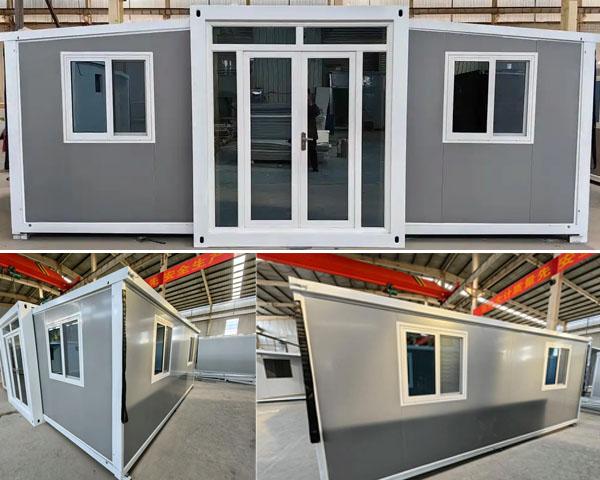
20ft double-wing expandable house
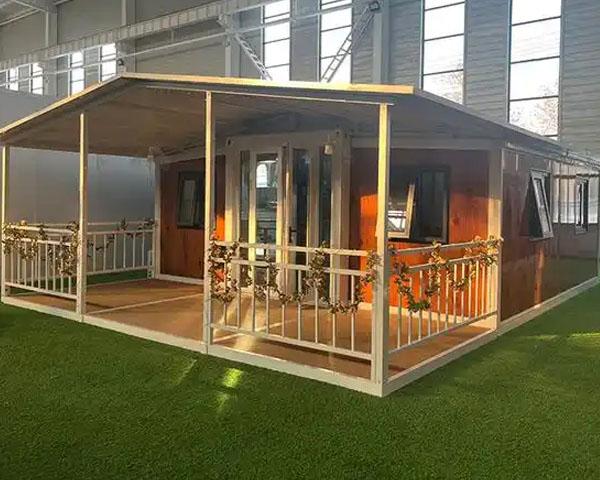
Flat roof double wing expandable container house
Container House is a profitable investment project, which can be used in many areas. Not only can it be built quickly and usually at a low cost, but it can also be designed and decorated in a variety of styles, making it a popular choice. Wanzhi Steel is a professional container house supplier in China.
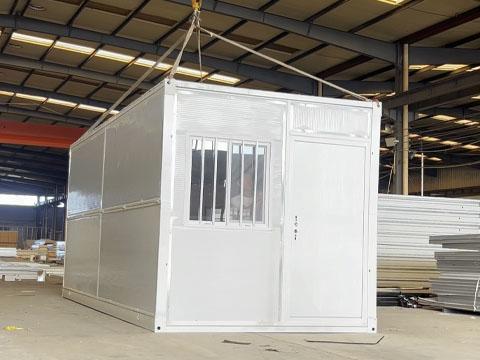
Folding house unfolding effect
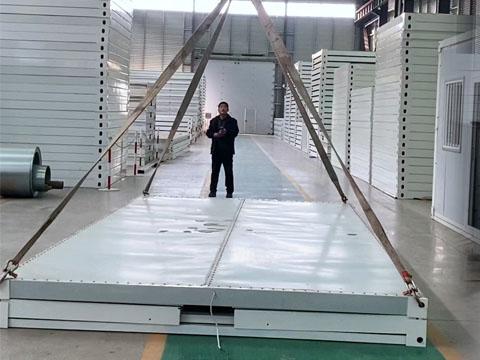
Folding house folding effect
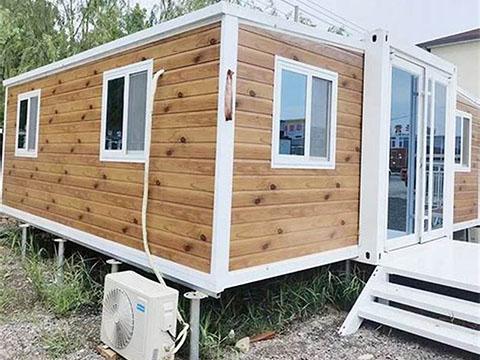
Rendering of an expandable container house installation
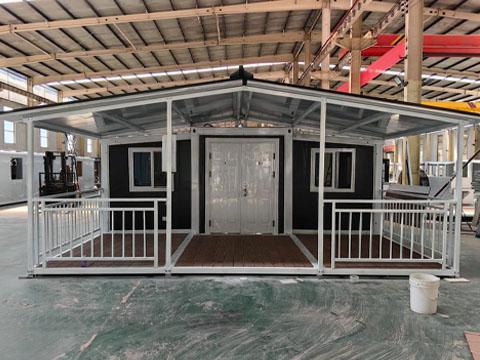
Custom house front terrace
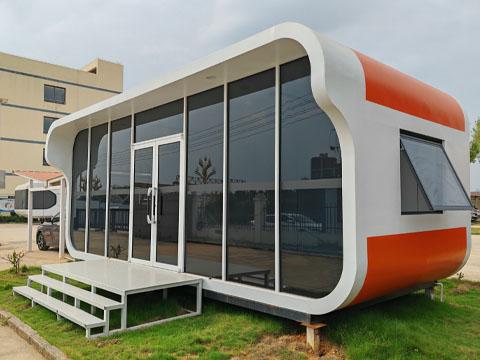
Apple Cabin B&B
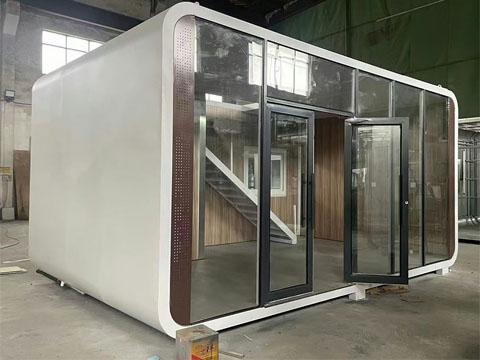
Apple cabin production completed
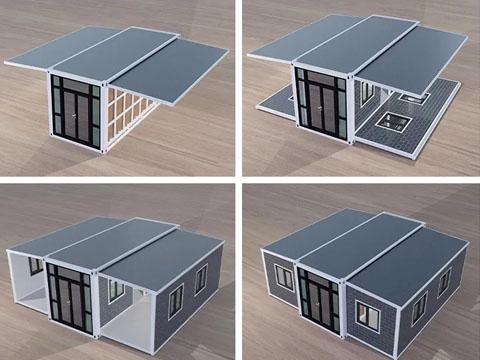
How to deploy the double-wing expansion house
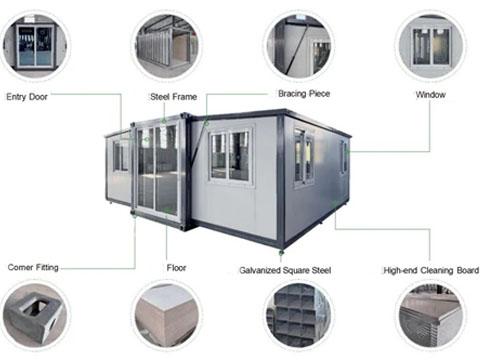
Various configurations
If you have a need for prefabricated housing, please feel free to contact us for more details.





